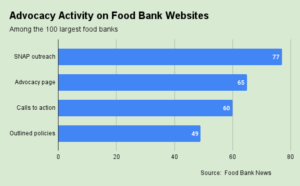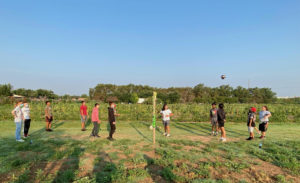It’s widely acknowledged in the hunger relief community that the people who grow the nation’s food also tend to be among the most food-insecure.
The estimated 2.4 million people in the U.S. who work on farms, many of them southern border immigrants, earned an average of $20,000 to $25,000 in 2020, according to the National Agricultural Workers Survey, putting them at poverty level wages. At the same time, only 13% accessed SNAP, said the report, likely because of language or knowledge barriers.
Laudably, many food banks have developed programs to serve farmworkers, often by partnering with local farmworker groups to facilitate distributions. Food banks are also sourcing food that is familiar and appealing to the largely Hispanic farmworker population, and even minimizing publicity around food distributions to assuage farmworkers’ fears of deportation.
The Fair Food Program from the Coalition of Immokalee Workers offers another way for food banks to show their support for farmworkers. The social responsibility program creates a method and incentives for food growers and food companies to pay their workers more money – a tactic that gets at the root of the food insecurity problem.
Support for the Fair Food Program is an endorsement of the concept of fair, livable wages as a solution to food insecurity. “If I had my pipe dream, I would see food banks around the country organizing around labor unions and minimum wages,” said anti-hunger activist Andy Fisher. “Because they don’t, by and large, and it’s a huge missed opportunity. They’ve got a huge organizing capacity, [and] they’ve touched the lives of millions of people.”
CIW works at the very top of the food supply chain, inducing large food buyers like grocery stores, restaurants and foodservice companies to change their behavior. These large-scale buyers are asked to pay a premium – a penny more per pound for produce – which is then passed on to workers as a bonus. Buyers also agree to purchase only from growers that adhere to a code of conduct.
An early win for CIW was a one cent per pound raise for tomato pickers. “There’ll be a line on that paycheck for Maria, [who] picked 1,000 pounds of tomatoes, at 1,000 times one cent,” Fisher explained. An extra $10 per week would be a nearly 3.5% raise for someone working 40 hours a week at the federal minimum wage of $7.25 per hour.
In order to become partners, farmers must complete a series of steps, including providing safer conditions in which workers have more autonomy and resolving any existing workplace complaints. Farmers also must start to hire farmworkers directly instead of going through contracting organizations. In return, farmers get preferred-provider status, reduced turnover, and access to the Fair Food label to demonstrate their ethical business practices to consumers.
Food buyers like grocers benefit from the positive publicity that comes from using their market power for good. In addition to the reputation boost, the Fair Food Program promises a more reliable and transparent food supply chain that removes the contracting middleman.
Fair Food Program’s partners in the grocery industry include Walmart, Trader Joe’s, Fresh Market, Whole Foods Market and Ahold Delhaize, which owns the regional brands Food Lion, Giant, Hannaford, and Stop & Shop. The midwestern grocery chain Meijer is a partner of a Fair Food Program-inspired organization in Michigan.
Notably absent from the Fair Food Program is the nationwide chain Kroger and Florida’s Publix, which operates nearly 900 stores in CIW’s home state. “It’s such a nominal amount, [but] they just won’t play ball,” Fisher said. “You end up with farmworkers going to a lot of food banks.” – Caroline Delbert
Caroline Delbert is a writer, avid reader, and contributing editor at Popular Mechanics.
Like what you’re reading?
Support Food Bank News
This article was made possible by the readers who support Food Bank News, a national, editorially independent, nonprofit media organization. Food Bank News is not funded by any government agencies, nor is it part of a larger association or corporation. Your support helps ensure our continued solutions-oriented coverage of best practices in hunger relief. Thank you!
Connect with Us:















